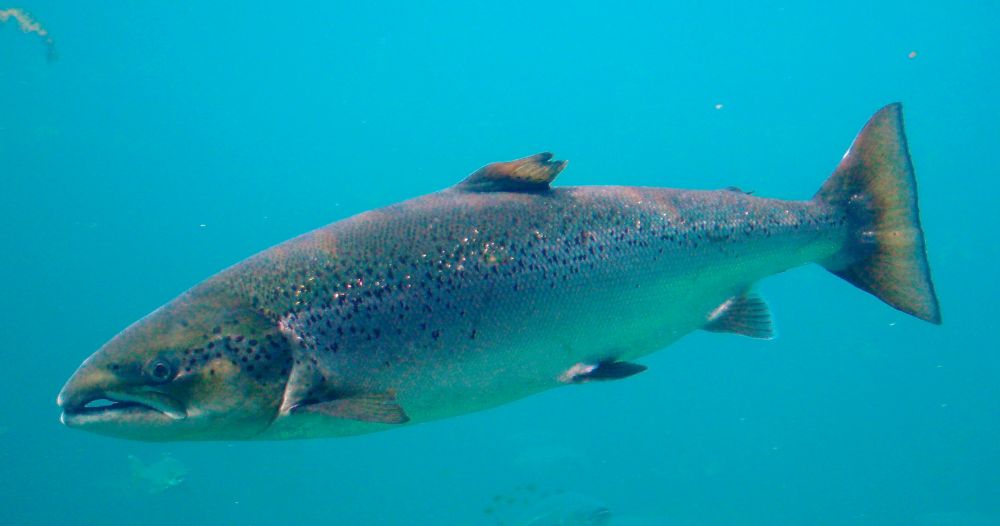
Read the article with FishingTheSpot: the salmon fish
Keep an eye on this subject!
Thousands of species spotlights and techniques but also all the local information about your city!



Meet other anglers near you and share your fishing fishing trips, afoot or on a boat, at sea or in freshwater
See the fishing tripsThe Salmon fish

from March to October
50 cm
Did you fish
this species this month?
The Salmon fish belongs to the Salmonidae family. It can reach a maximum weight of 47 kg for a height of 1.5 m. The current size of the salmon is 50 to 70 cm, with a weight of 2.3 to 9.1 kg. It can reach a maximum weight of 47 kg for a height of 1.5 m. The current size of the salmon is 50 to 70 cm, with a weight of 2.3 to 9.1 kg. Spawning season is in October-November. Fertility is 1,500 and 1,800 eggs per kg of weight. It is fished in March in October.
Salmon have a hydrodynamic and powerful body. The caudal peduncle is elongated and narrower than in trout, with which salmon share many characteristics. The mouth does not extend beyond the plumbing of the posterior edge of the eye. Adults have sexual dimorphism in the muzzle. Females have a rounded snout, while males have an elongated snout and their jaws bend sharply as they age, giving them the name of becard. The caudal fin is fairly indented, with a concave posterior edge and well defined tips. The adipose fin characteristic of Salmonids is present in salmon. The livery is different depending on the reproductive stage of the individual. The parr have 8 to 11 dark-colored vertical bars on the sides. The smolt and the adult have a silvery livery with black cross-shaped punctuation above the lateral line. At the time of reproduction, the male is adorned with bright colors.
The Salmon fish lifestyle
Salmon have an essentially carnivorous diet. At sea, it preys on crustaceans and fish and does not disdain cephalopods. Parr feed like trout from drifting prey: invertebrates, insects, crustaceans... As breeding approaches, adults feed little or more.
Salmon are primarily anadromous, i. e. they usually live at sea but swim up rivers and streams to spawn. Spawning season is in October-November. The female digs a nest at a shallow depth (0.5 m to 3 m) on a gravelly bottom in the current. It uses her tail like a paddle to dig a deep depression of 10 to 30 cm for a length of up to 3 m. It lays large eggs (5 to 7 mm), a little sticky and heavier than water, several times every five to ten minutes. They are fertilized by the males at the time of their expulsion. Then, the female digs a new nest upstream and indirectly covers the first gravel nest. Egg laying lasts between five and twelve days, with the female laying between 1,500 and 1,800 spherical eggs per kilogram of her weight. The eggs overwinter between the gravels and hatch in April-May, with water temperatures around 4°C.
The Salmon fish habitat
Breeding takes place in streams with a gravel bottom and fresh, well oxygenated water. These streams also form the living environment for juveniles after hatching. Growth and maturation take place at sea in areas called fattening areas (very rapid growth).
The fattening areas are located off Iceland in the Atlantic Ocean. Atlantic salmon are found throughout northern Europe. It is absent from the Mediterranean.
The salmon fish angling
Drift fishing is one of the most promising methods for salmon fishing. It is a known fact that one of the best methods to catch salmon with live bait is to use eggs, and for artificial lures, it is recommended to use spinners such as Mepps Aglia.


